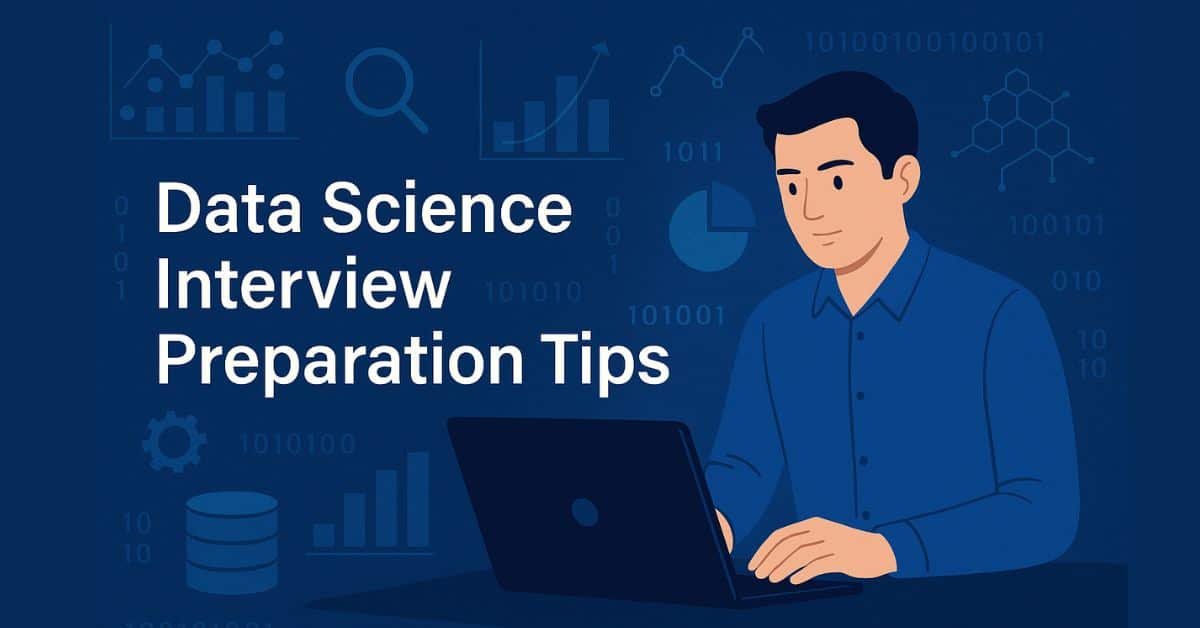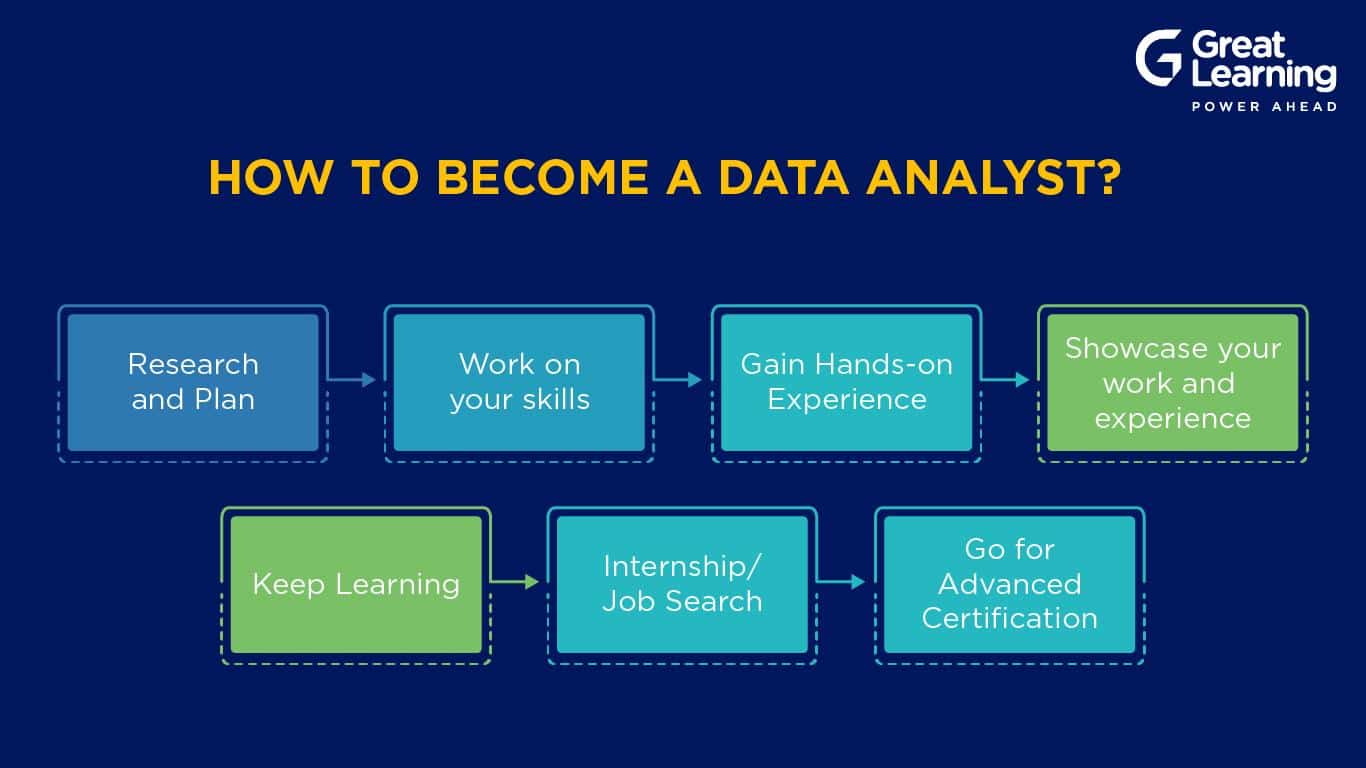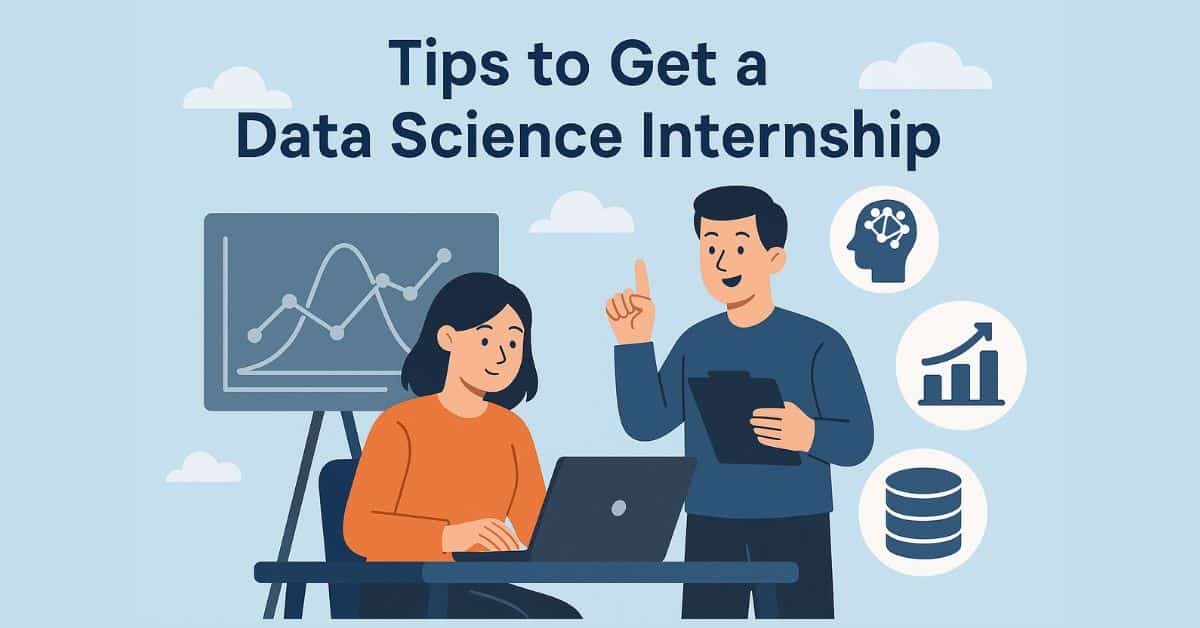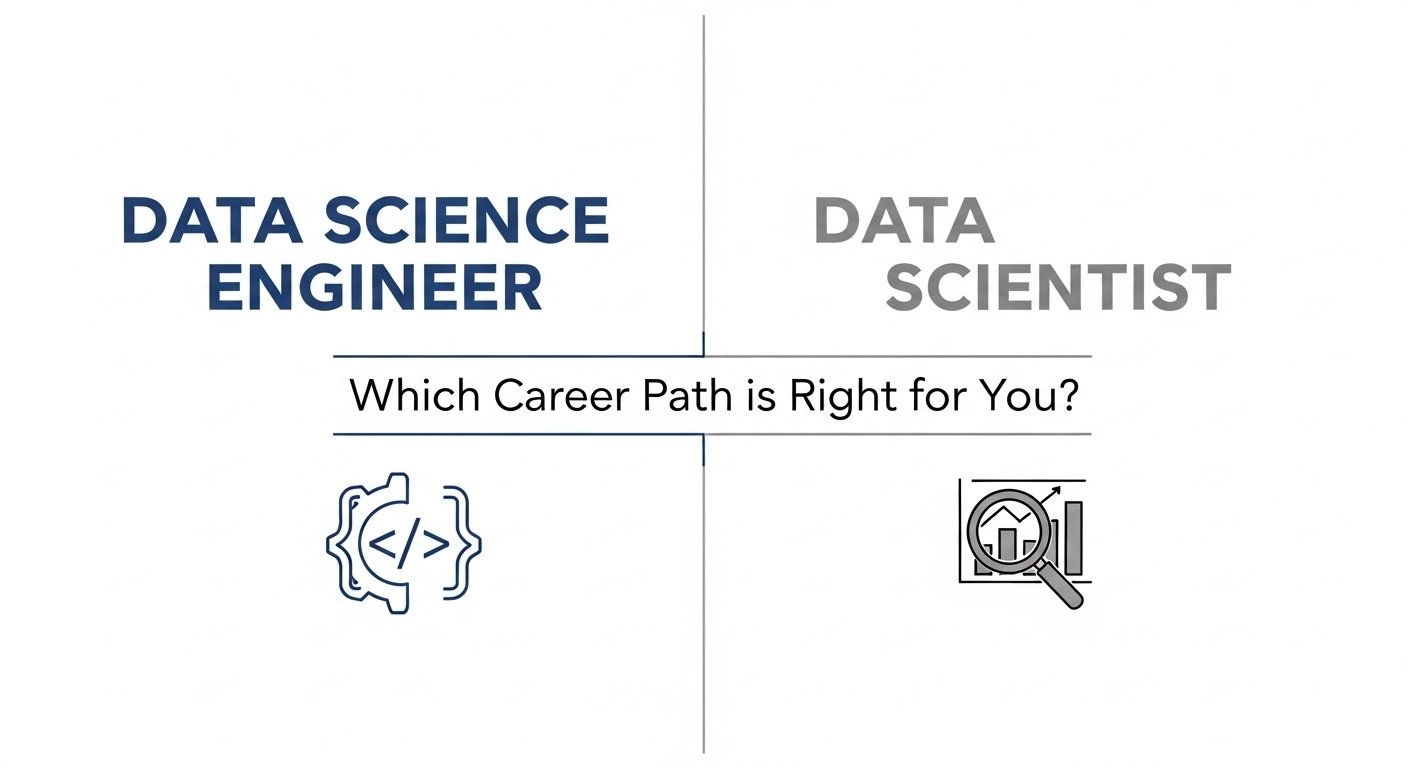Preparing for a data science interview can feel like a big task. Data science roles require a mix of technical skills and problem-solving abilities. A data science interview tests your knowledge in many areas, from coding to statistics and machine learning.
A good preparation helps you show your skills and confidence. It makes you ready for different types of questions. This increases your chances of getting the job.
What to Expect in a Data Science Interview
A typical data science interview process has several stages. You usually face different types of questions at each stage.
- Initial Screening: Often a phone call with HR. They check your basic qualifications and interest.
- Technical Screen: A quick test of your coding or technical knowledge, often via an online platform or a short call.
- On-site Interviews (or Virtual): This is the main part. It includes multiple rounds, each focusing on different areas.
The main areas covered are:
- Coding: Python or R, data structures, algorithms.
- SQL: Data querying and manipulation.
- Statistics and Probability: Hypothesis testing, distributions.
- Machine Learning: Algorithms, model evaluation, project experience.
- Product Sense/Business Case: Applying data science to real-world business problems.
- Behavioral Questions: How you work, handle challenges, and fit the team.
5 Steps to Prepare for a Data Science Interview
Preparing well means covering all key areas. Here are five essential steps:
- Strengthen Your Technical Fundamentals: Master coding, SQL, stats, and ML basics.
- Practice Problem-Solving: Work through coding challenges and case studies.
- Review Your Projects: Be ready to talk about your past work in detail.
- Understand Business and Product Thinking: Learn to connect data to business goals.
- Prepare for Behavioral Questions: Practice answering questions about your work style.
Let’s look at each step.
1. Strengthen Your Technical Fundamentals
You need a solid grasp of core technical areas. This is the foundation of data science.
Coding (Python/R):
- Focus: Data structures (lists, dictionaries, sets), algorithms (sorting, searching), and common operations (string manipulation, loops).
- How to practice: Use platforms like LeetCode (for Python) or HackerRank. Start with easy problems and move to medium ones. Focus on efficiency and clear code.
- Example: You might be asked to write a function that finds the most frequent element in a list.
SQL:
- Focus:
SELECT,FROM,WHERE,GROUP BY,ORDER BY,JOINtypes (INNER,LEFT,RIGHT), subqueries, and window functions. - How to practice: Use platforms like LeetCode SQL problems, HackerRank SQL, or DataLemur. Practice writing queries to extract specific data, aggregate information, or join tables. Enroll in Data Analytics in SQL Course to cover SQL concepts Related to Data Science.
- Example: You might need to write a query to find the average order value for each customer.
Statistics and Probability:
- Focus: Key concepts like mean, median, mode, variance, standard deviation. Understand probability distributions (normal, binomial, Poisson). Learn about hypothesis testing (p-value, t-test, ANOVA), A/B testing, and sampling.
- How to practice: Review concepts from textbooks or online courses (e.g., Statistics for Data Science & Analytics Course). Work through practice problems.
- Example: An interviewer might ask you to explain what a p-value means or how you would design an A/B test for a new website feature.
Machine Learning:
- Focus: Understand popular algorithms (Linear Regression, Logistic Regression, Decision Trees, Random Forests, Gradient Boosting, K-Means, SVM). Know their assumptions, strengths, and weaknesses.
- Focus on Evaluation: Metrics like accuracy, precision, recall, F1-score, ROC-AUC. Understand overfitting and underfitting, bias-variance trade-off, and cross-validation.
- How to practice: Review concepts, explain algorithms in simple terms. Practice explaining how you would choose a model or evaluate its performance for a specific problem.
- Example: You might be asked to explain the difference between bagging and boosting, or how to handle imbalanced datasets.
2. Practice Problem-Solving
Interviews often involve working through problems out loud. This tests your thought process, not just the final answer.
- Coding Challenges: When solving a coding problem, think out loud.
- Clarify the problem first.
- Discuss different approaches before coding.
- Explain your chosen solution step-by-step.
- Consider edge cases and optimize your code.
- Case Studies: Some interviews include open-ended case studies.
- Focus: These problems do not have one right answer. They test your ability to structure a problem, make assumptions, and propose a data-driven solution.
- Example: "Our e-commerce site sees a drop in conversion rates. How would you investigate this?" You should discuss data sources, metrics to track, potential root causes, and how you would test hypotheses.
Also Read: Data Science Interview Questions and Answers
3. Review Your Projects
Your past projects are a key talking point. Be ready to discuss them in detail.
- Choose 2-3 strong projects: Select projects that highlight a range of your skills (e.g., one coding, one ML, one business-focused).
- Prepare to explain each project:
- Problem: What problem did you try to solve?
- Data: What data did you use? How did you collect or clean it?
- Methodology: What techniques or models did you use? Why did you choose them?
- Challenges: What difficulties did you face? How did you overcome them?
- Results/Impact: What were the outcomes? How did it benefit the business or project? Use numbers if possible.
- Learnings: What did you learn from the project? What would you do differently next time?
- Example: "In a project to predict customer churn, I used logistic regression. I found that customer service interactions and recent product usage were key predictors. This model helped the marketing team identify at-risk customers and improve retention by 5%."
4. Understand Business and Product Thinking
Data scientists work on business problems. Show that you can connect data insights to real-world value.
- How data science impacts business: Think about how your models or analyses can help a company make more money, save costs, improve customer experience, or reduce risk.
- Product Sense:
- Focus: If interviewing for a product-focused role, understand how to define metrics, analyze user behavior, and contribute to product development.
- Example: If a company launches a new feature, how would you measure its success? (Think about A/B testing, key performance indicators like user engagement, retention, etc.).
5. Prepare for Behavioral Questions
These questions assess your soft skills and how you fit into a team.
- Common questions:
- "Tell me about yourself." (Have a concise, 1-2 minute answer ready.)
- "Why data science?"
- "Why this company?" (Show you did your research.)
- "Tell me about a time you failed."
- "Tell me about a time you had a conflict with a colleague."
- "How do you handle feedback?"
- Use the STAR method:
- Situation: Describe the context of the situation.
- Task: Explain your goal or task.
- Action: Describe the actions you took.
- Result: Explain the outcome of your actions.
- Practice your answers: Do not memorize them, but know your key stories. Be ready to tell stories that show your skills like problem-solving, teamwork, communication, and leadership.
General Interview Tips
- Research the Company: Know their products, recent news, and values. This shows genuine interest.
- Ask Questions: Prepare 2-3 thoughtful questions to ask the interviewer at the end. This shows engagement.
- Practice Mock Interviews: Ask a friend or mentor to do a mock interview. This helps you get comfortable and get feedback.
- Dress Professionally: Even for virtual interviews, look presentable.
- Send a Thank-You Note: Send a brief thank-you email within 24 hours of your interview. Reiterate your interest.
To enhance your preparation, consider enrolling in Great Learning’s PG Program in Data Science, which covers everything from coding & machine learning to project-based learning, ensuring you’re ready to tackle real-world challenges






